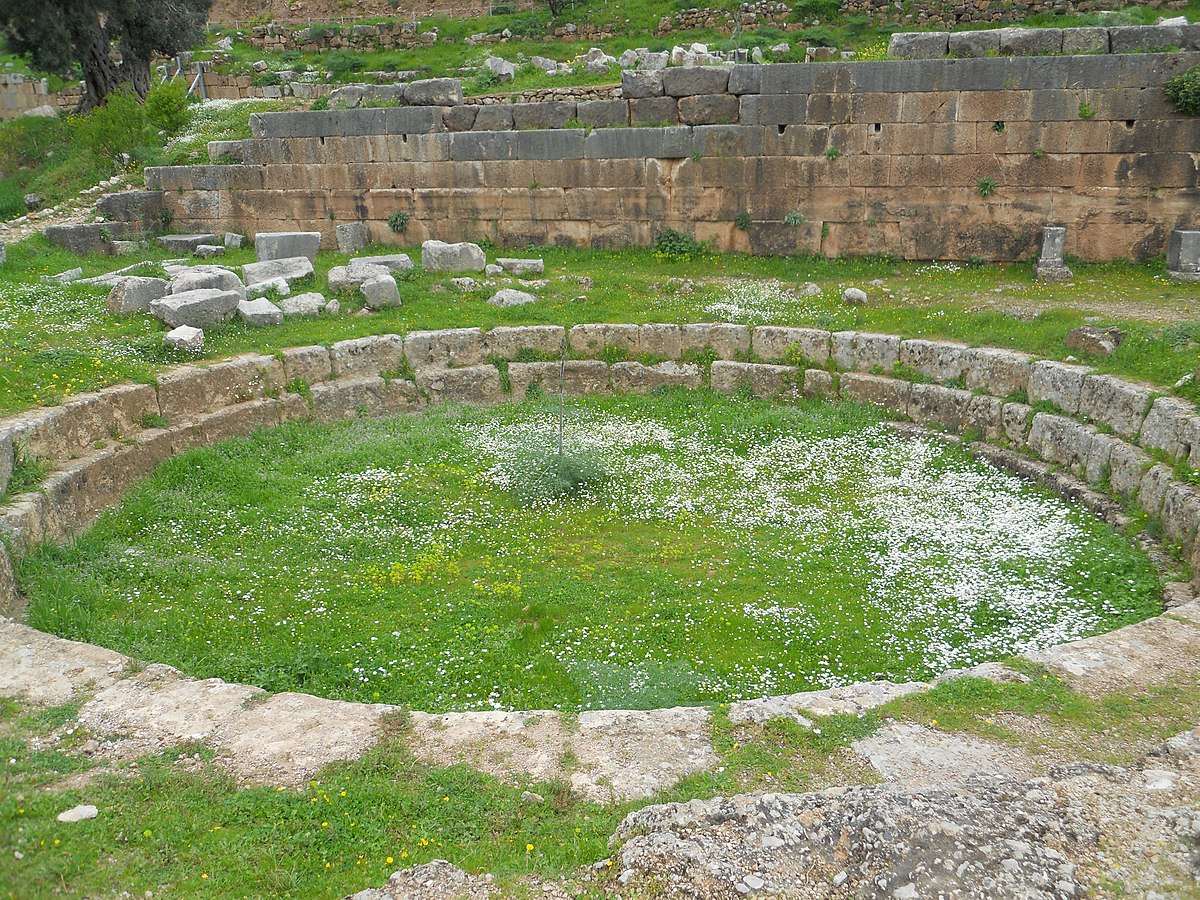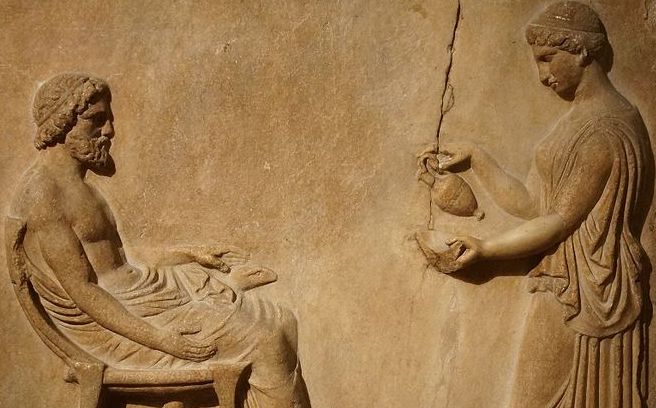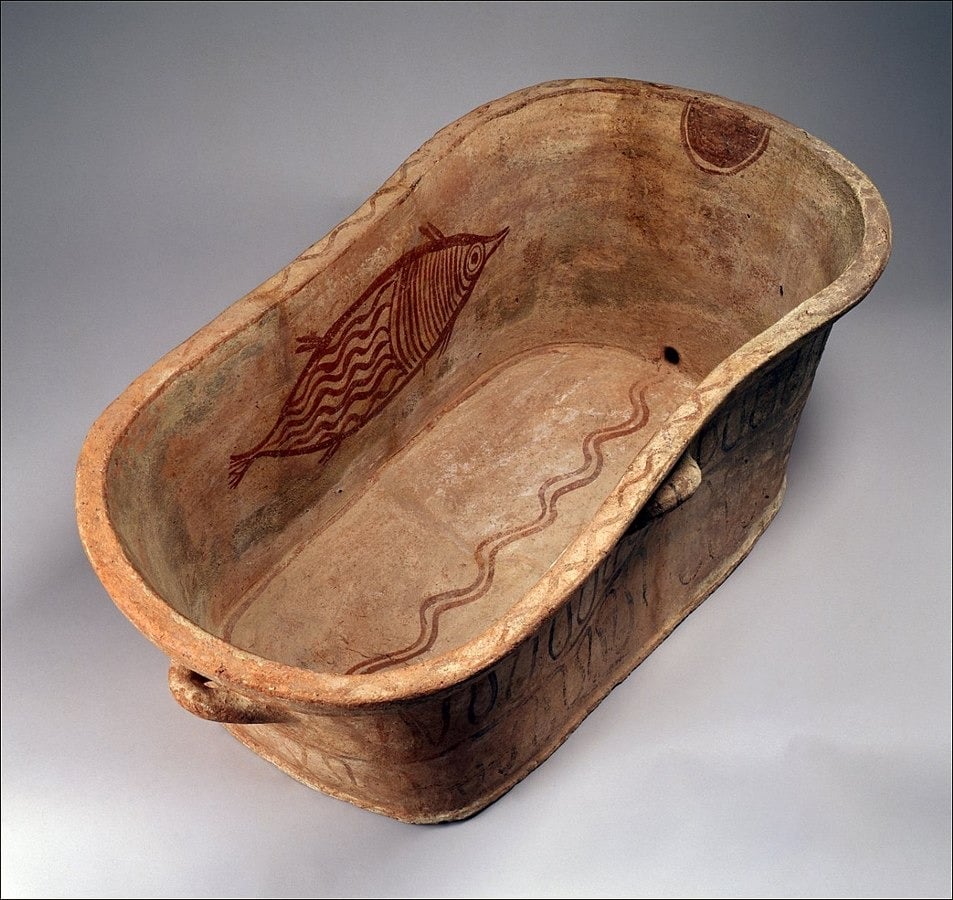
The word hygiene comes from a French Latinization of ὑγιεινή (hygieinē), which means “health” or “healthy.” It comes from the Greek term ὑγιής (hygiēs), which signifies “healthful” or “wholesome.” Hygiene was personified as a goddess in ancient Greek religion.
Hygiene in ancient Greece held considerable importance and was seen as a vital aspect of maintaining good health and well-being. The Greeks recognized the significance of cleanliness and implemented various practices to promote hygiene.
In many ways, ancient Greek hygiene practices resemble our own. In others, however, they sharply differed. For example, the ancient Greeks did not use soap, at least not as we would understand it.
Hygiene and Religion in Ancient Greece
As the saying goes “Cleanliness is next to Godliness,” but the for the ancient Greeks there were more literal religious dimensions associated with hygiene.
Hygieia was the goddess of hygiene, health, and cleanliness, worshipped by the ancient Greeks and Romans. The main temples dedicated to Hygieia were located in Epidaurus, Corinth, Cos, and Pergamon.
Hygieia was associated with the Greek god of medicine, Asclepius, who was the son of the Olympian god Apollo. She is commonly recognized as one of the daughters of Asclepius and his wife Epione.
In Apollo’s domain, each of Hygieia and her four sisters had a specific role: Hygieia represented health, cleanliness, and sanitation; Panacea embodied the concept of a universal remedy; Iaso was responsible for the recuperation from illness; Aceso oversaw the healing process, and Aegle symbolized radiant good health.

Baths
The ancient Greeks had bath complexes designed for bathing and cleanliness purposes, sharing a similar concept with Roman baths. These baths can be found in various Hellenized countries, including Greece, Egypt, Italy, and even Marseille, France, which was founded as an ancient Greek colony.
The earliest known baths date back to the 5th century BC, and over time, public baths evolved into significant and culturally rich structures during the Hellenistic era. The Romans, who are even more famous for their bathhouses continued to operate these baths and build their own after they conquered the Greek world.
The Greeks favored a variety of different baths. According to Homer and other Greek writers, the Greeks used bathtubs, larger public baths, natural hot springs, and hot-air or steam baths.
The latter type, which came to be known as the Laconian bath, was invented by the Spartans. They consisted of circular rooms with cone roofs. The Greeks heated rocks and placed them under the floor or in the water using pitchforks. They would pour water on the hot rocks to create steam, while also burning aromatic substances like bay laurel or juniper. To enhance sweating, they would occasionally rub peppermint or elderflower tea on their bodies.
Before the introduction of soap, both Greeks and Romans relied on bathing techniques involving olive oil. They would create a lather using olive oil and then use a strigil, a small curved blade, to scrape off the oil along with dirt and sweat. In more affluent households, olive oils used for bathing were often scented with perfumes to enhance the bathing experience.

Toilets
The Minoans, a Bronze Age civilization based originating from Crete, are believed to have invented the world’s very first flushing toilet about 4,000 years ago.
The remains of these toilets can still be seen in the ruins of Knossos Palace today. The royals of Knossos sat on a wooden seat over a clay bowl to relieve themselves. When they were finished, the human waste would be flushed with water into a stone sewage system below.
Throughout the later periods, the ancient Greeks continued to build toilets and the plumbing and sewage systems necessary to support them. As in ancient Rome, latrines were often public.
In ancient Greece, the Greeks utilized Pessoi, which were pebbles, or Ostraca, which were broken pieces of ceramic pottery, to wipe themselves. The Ostraca were carefully smoothed around the edges and employed for scraping and wiping.
Rather amusingly, archaeologists have discovered Ostraca fragments with inscribed names, indicating that the ancient Greeks would often write the names of their enemies on these pottery pieces before using them for wiping.
See all the latest news from Greece and the world at Greekreporter.com. Contact our newsroom to report an update or send your story, photos and videos. Follow GR on Google News and subscribe here to our daily email!



